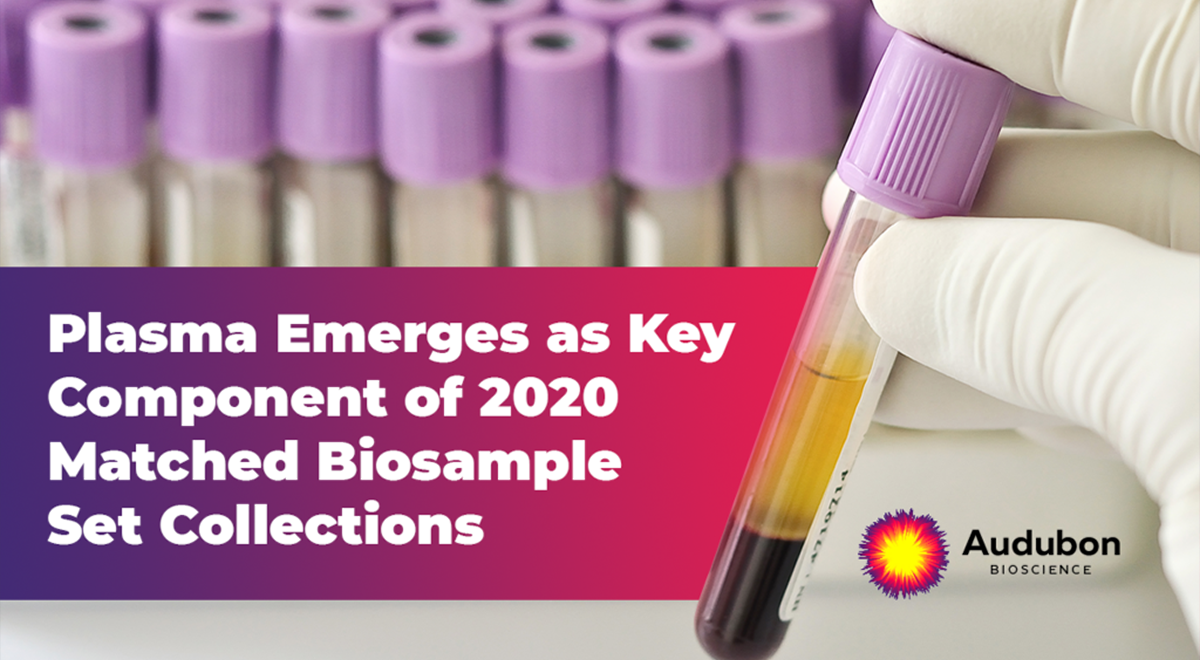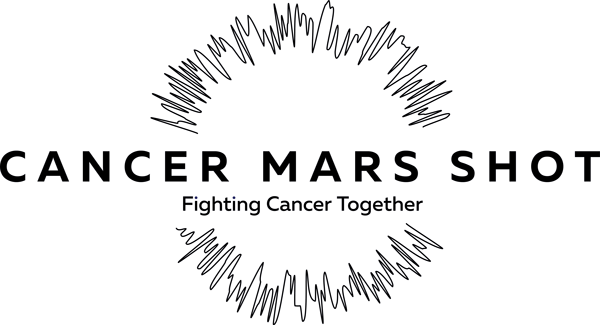Plasma Matched Biosample Sets – a Key Component of Audubon’s 2020 Collections

Based on our yearly analysis of collection requests and projects, we noticed that plasma matched biosample sets were a considerable part of our work over the last year.
At Audubon Bioscience, we work closely with our scientific partners to provide a personalized relationship by having specific collection methods based on their research needs, ensuring quality processing protocols, and collecting pinpointed data. This leaves us with a broad overview of the biospecimen collection requests and current biomedical research directions. Analyzing those requests and the types of samples we collect yearly allows us to understand the environment and its needs and therefore be prepared to reply to them.
This article presents an analysis of our matched biosample set collections for 2020. It reflects why blood plasma is such a requested part of matched sets and how they fit the current trends and milestones of translational and clinical research.
What are matched biosample sets?
Matched biosample sets are multiple biosamples that are collected from the same donor. They can be divided into three main categories.
- Biosamples type
Biospecimens can be grouped based on the type of biosamples composing the set. Sets can be composed of tissue samples matched with blood or biofluid samples matched with tissue and/or blood. Or all three of them together, for example, urine, matched with plasma and FFPE or frozen tissue from a biopsy of bladder cancer patients. In the case of lung cancer, it can require a blood sample, biopsy sample, and sputum or bronchoalveolar lavage.
- Treatment type
In other cases, the difference between the matched samples can involve different treatment types. Many studies compare treatment-naive versus post-treatment and pre-surgical collections versus post-surgical collections to identify resistance mechanisms.
- Procurement type
When multiple analytical purposes need to be met, procurement projects could require collecting the same type of biospecimen but in different isolation formats. For example, FFPEs are better for morphological analysis, whereas frozen tissue is the format of choice for next-generation sequencing or mass spectrometry studies. Fresh tissue is used for in vivo studies on derived xenografts or primary cell cultures. When it comes to blood collection, scientists can choose between two matrices - plasma and serum, and the choice will depend on the analyte of interest.
Which research trends require matched biosample sets?
Biospecimen collection requests are tightly connected to the trends and current needs of the biomedical research space. Based on our observations, we have identified the following main driving forces behind the increasing demand for matched biosample sets:
- Development of liquid biopsy biomarker tests
The name implies that liquid biopsy often requires a biofluid biosample (blood or other) alongside the classical tissue biopsy. Liquid biopsies show great promises for early and non-invasive disease detection, treatment response, and outcome monitoring. Despite their progress and the several FDA approvals, such tests require further research efforts to deliver their full potential.
- Increase the personalized approach to all disease types
Although science and medicine have achieved tremendous success over the last years, further efforts are still needed. And this ultimate goal of modern medicine relies on all of the types mentioned above of matched collections.
- Understand the various immunity pools
While the immune response is often analyzed from a blood draw sample containing the blood immune cells and crucial cytokines, it is essential to remember that immune cells are recruited to the site of the infection. Several studies are now pointing out these different immunity pools. This has been observed in Covid-19 patients and is also transferable to the tumor context where T lymphocytes are recruited, creating two distinct immune cell populations at the local inflammation site and in the bloodstream.
- Understand the tumor microenvironment
An already well-established factor in cancer progression and response to treatment, the tumor microenvironment, represents the cellular and extracellular composition of a solid tumor formation. Cancer cells from within the tumor formation modify the non-cancerous cells in close proximity, such as immune cells or blood vessel cells. Studying these mechanisms often requires different solid tissue procurement format matched sets, for example, an FFPE sample with a fresh tissue sample to isolate a specific cell type or a cancer tissue matched with a lymph node or normal adjacent tissue sample.
25% of Audubon's 2020 collections have been matched sets

When we analyzed the nature of our 2020 collections, we noticed that matched sample sets represented 25% of our biosample procurement projects. The other 75% were unmatched sample requests, meaning that researchers were looking into just one thing: a buffy coat or an FFPE sample.
Going further into our analysis, we observed that blood-derived samples were the leading matched biospecimen. Matched blood samples accounted for 64.9% of the time and consisted of combinations between plasma, serum, whole blood, or PBMCs. Blood samples are present in another 14% where they are matched with a biofluid such as urine or saliva, and 13% of the time, they complement a tissue sample. 7% of all matched sample sets involved only tissue samples in different isolation formats such as FFPE and snap frozen or fresh tissue.

Plasma emerges as a key component of matched biosample sets
As blood-only samples accounted for more than 50% of matched sets, we looked deeper into those collections, and we noticed that plasma accounts for 98.9% of blood-matched sample sets. Whether it is plasma with a buffy coat, as in almost 90% of the cases, or plasma with serum or whole blood, we see that a large percentage of researchers ask specifically for plasma.

This observation is in line with the result that 70% of our match sets projects were from oncologic conditions. The increased interest in cancer patient-derived plasma samples is further supported by the biomedical field's active efforts in liquid biopsy tests development.
Our 2020 collections analysis shows that matched biospecimen sample sets are becoming an essential part of biospecimen procurement projects. We will continue to monitor closely and analyze these research trends to meet our partners research needs and help raise awareness and educate them on the newest trends in biospecimen requests.
Recently, our analysis was selected for a poster presentation at this year's Leaders In Biobanking virtual congress.
Subscribe to our official YouTube channel and make sure you don't miss out on more presentations and video materials from us. If your project needs a customized matched biosamples set collection, visit our dedicated product page or reach out to our team today.
References:
- Zhang, X. et al. Dissecting esophageal squamous-cell carcinoma ecosystem by single-cell transcriptomic analysis. Nat. Commun. 12, 5291 (2021).
- Farber, D. L. Tissues, not blood, are where immune cells act. 4.
- Corgnac, S. et al. CD103+CD8+ TRM Cells Accumulate in Tumors of Anti-PD-1-Responder Lung Cancer Patients and Are Tumor-Reactive Lymphocytes Enriched with Tc17. Cell Rep. Med. 1, 100127 (2020).
- Egelston, C. A. et al. Human breast tumor-infiltrating CD8+ T cells retain polyfunctionality despite PD-1 expression. Nat. Commun. 9, 4297 (2018).

